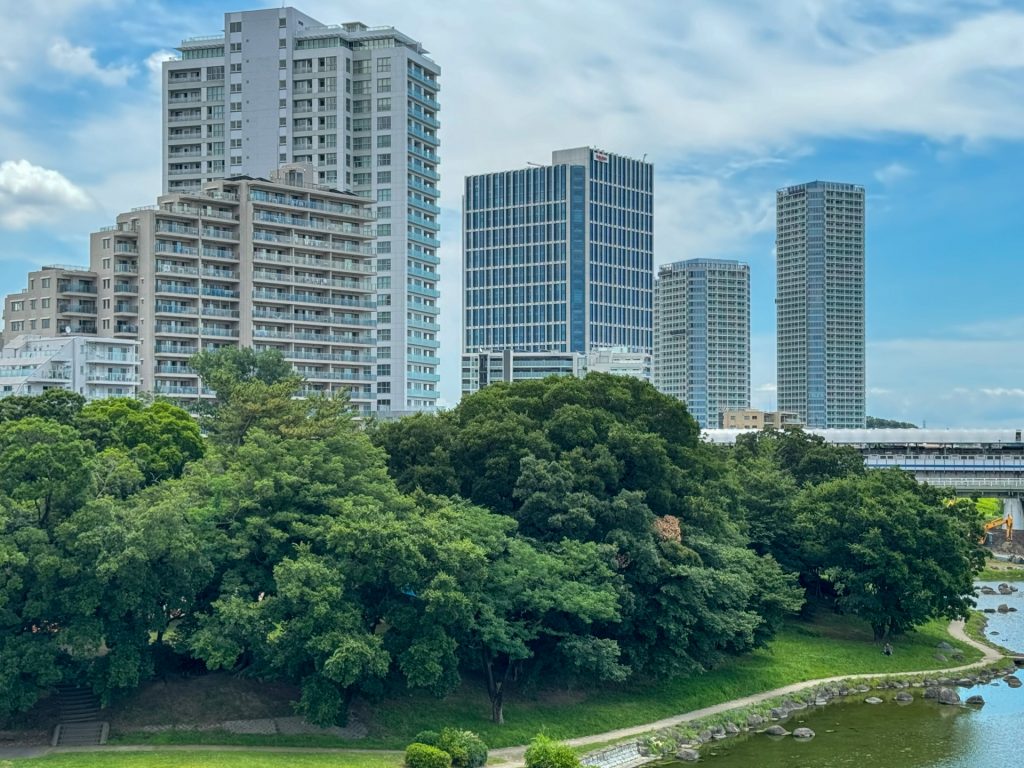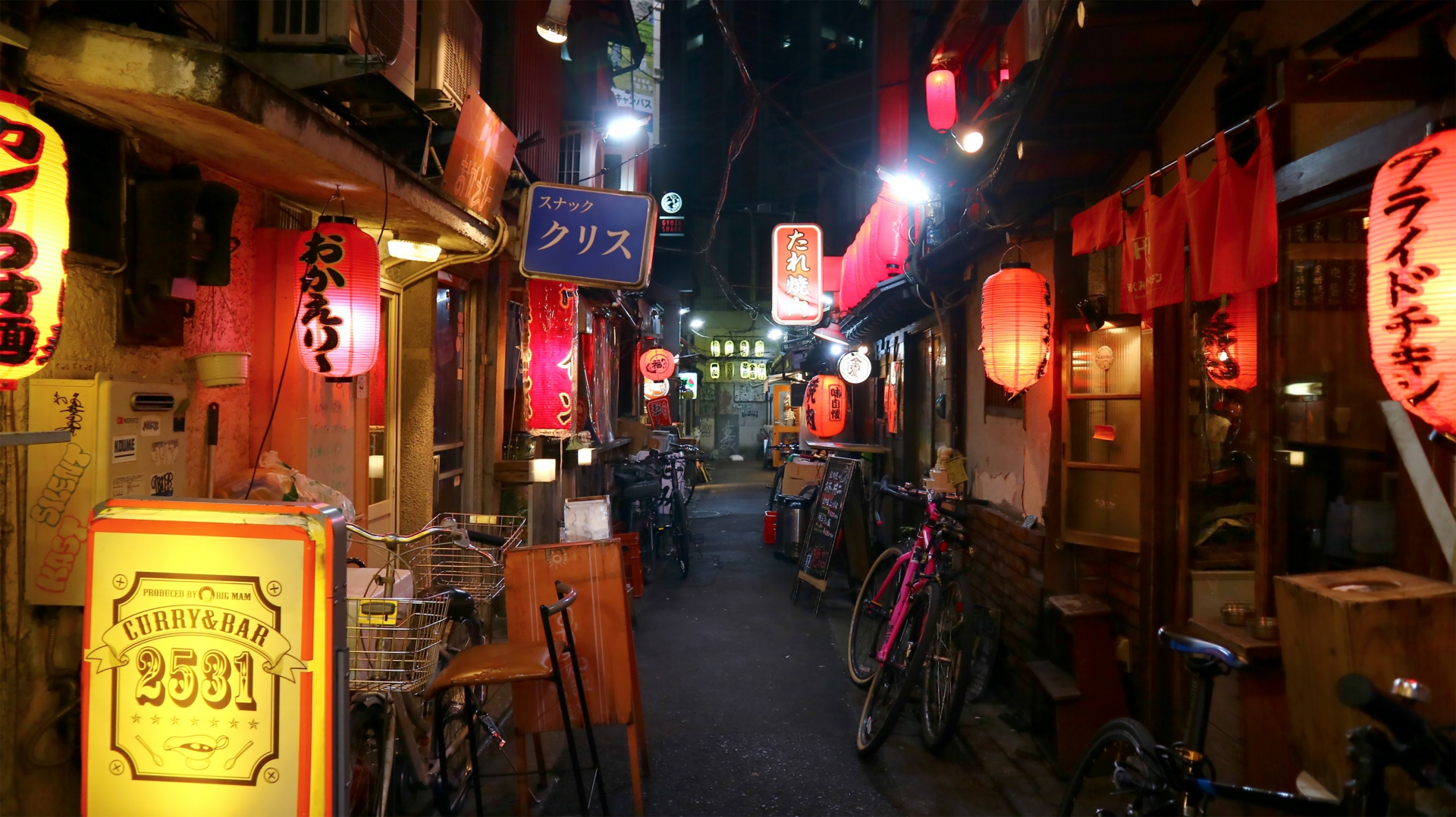Why Foreigners Are Drawn to Futako-Tamagawa and Sangenjaya
Tokyo is a city of infinite neighborhoods, each with its own pulse, history, and character. For foreigners arriving in the capital, the initial instinct is often to look at the well-trodden districts—Shinjuku, Shibuya, Roppongi, or Minato. Yet in recent years, two areas have quietly risen in popularity among international residents: Futako-Tamagawa and Sangenjaya.
Why these two? On the surface, they could not be more different. Futako-Tamagawa, perched on the banks of the Tama River, has been shaped by corporate giants like Rakuten, with its global headquarters located here. The presence of Temple University’s Japan campus nearby also infuses the area with an international academic community. The atmosphere is sleek, family-friendly, and green.
Sangenjaya, by contrast, is dense, messy in the best way, and alive 24 hours a day. It has an unmistakable youthful energy, with winding alleys, late-night eateries, and an undercurrent of counterculture. Its proximity to Shibuya makes it convenient for students, artists, and entrepreneurs.
For foreigners, both neighborhoods represent alternatives to the “obvious” Tokyo choices. This article explores why international residents are increasingly choosing Futako-Tamagawa and Sangenjaya, what everyday life looks like in each, and how the realities of Tokyo’s rental market shape their decisions.
Chapter 1: Futako-Tamagawa vs Sangenjaya – Why Foreigners Are Choosing These Areas
Futako-Tamagawa and Sangenjaya share an odd kinship. Both lie along the Den-en-toshi Line, a commuter artery stretching from Shibuya into western Tokyo. Yet the character of each station could not be more distinct.
1. Lifestyle and Atmosphere
- Futako-Tamagawa feels modern, open, and polished. Its skyline has grown vertically thanks to large-scale developments like Futako-Tamagawa Rise. Families stroll with strollers, and expats often remark how “Western” the area feels, with wide sidewalks and planned public spaces.
- Sangenjaya, by contrast, feels organic. Streets radiate out in unpredictable patterns from the station. Lantern-lit izakayas, secondhand bookshops, and tiny jazz bars make it feel quintessentially Tokyo. For a foreigner seeking authenticity and spontaneity, this is a dream.
2. Housing and Rent
- In Futako-Tamagawa, rents are high but predictable. A modern one-bedroom apartment averages ¥160,000–¥180,000 per month, often with spacious layouts compared to central Tokyo.
- Sangenjaya offers smaller, older apartments, but proximity to Shibuya inflates prices. A compact one-room (1K) may run ¥120,000–¥150,000. Yet the lower upfront costs and shorter commutes appeal to students and young professionals.
3. Transport
- Both areas connect easily to Shibuya: 10 minutes from Futako-Tamagawa, just 5 from Sangenjaya.
- For Temple University students, Sangenjaya is unbeatable. For Rakuten employees, Futako-Tamagawa offers walk-to-work convenience.
4. Foreign-Friendliness
- Futako-Tamagawa is highly internationalized. English menus are common, international supermarkets like Seijo Ishii and Kaldi are plentiful, and many landlords are familiar with foreign tenants.
- Sangenjaya is more “local.” English signage is rarer, but the openness of its nightlife culture means foreigners are easily absorbed into social circles.
In summary, Futako-Tamagawa attracts expat families and corporate workers, while Sangenjaya draws students and creatives. The choice is less about cost and more about lifestyle preference.
Chapter 2: Living in Futako-Tamagawa – The Ideal Environment for Rakuten and Temple University Residents
Imagine waking up in a sleek high-rise apartment overlooking the Tama River. Joggers are already circling the riverbank, while commuters head toward the Den-en-toshi Line. For foreigners affiliated with Rakuten or Temple University, this is daily life.
1. Walkable and Bike-Friendly
Futako-Tamagawa is unusually generous in space for Tokyo. Wide pedestrian areas encourage walking, and cycling is a norm. For Rakuten employees, commuting can be as simple as a 10-minute walk or 5-minute bike ride. Students often bike toward Setagaya or Sangenjaya.
2. Shopping and Daily Necessities
The Rise complex offers everything from upscale fashion to electronics. There is a Costco-like feel with the nearby Takashimaya department store, where international foods and imported wines are available. For daily groceries, supermarkets like Ozeki and Seijo Ishii ensure familiarity for expats missing home flavors.
3. Lifestyle by Time of Day
- Morning: Professionals stream toward Rakuten Tower. Cafés like Starbucks and local bakeries are filled with laptop workers.
- Afternoon: Families shop, students gather at cafés, and the riverbanks come alive with cyclists.
- Evening: Izakayas along the river or in Rise attract mixed groups of Japanese and foreign employees.
4. Family and Community
Futako-Tamagawa is considered family-friendly. Parks, international kindergartens, and English-speaking medical clinics make it attractive for long-term foreign residents with children.
5. Rent and Housing Stock
Many buildings cater directly to corporate leases. Apartments are modern, with layouts resembling Western standards—larger kitchens, more storage, and security systems. Prices, though higher, reflect these amenities.
For foreigners, Futako-Tamagawa offers a comfortable, predictable Tokyo life with global conveniences within reach.
Chapter 3: Choosing Sangenjaya – A Fusion of Youth Culture and Urban Energy
Step out of Sangenjaya Station and you’re immediately in a maze of neon signs, ramen shops, and bars open until dawn. For many Temple University students, this is the Tokyo they imagine before arriving.
1. Proximity to Shibuya
Sangenjaya is two stops from Shibuya, or even a brisk 20-minute walk. This makes it the perfect base for students who want to balance academic life with the cultural and social opportunities of central Tokyo.
2. Nightlife and Culture
Unlike Futako-Tamagawa’s polished commercial core, Sangenjaya thrives on grit and creativity. Streets like Sankaku Chitai are packed with tiny bars where English may not be spoken, but where curiosity bridges language gaps. Live music, indie theater, and underground art flourish here.
3. Everyday Life
The area’s supermarkets, 100-yen shops, and vintage stores make daily life affordable. International residents quickly find themselves integrated into the fabric of the neighborhood—regulars at local ramen shops or part-time workers at cafés.
4. Housing
Apartments are older, often with thin walls and limited space. But they’re affordable and located within walking distance of everything. For students and single professionals, convenience trumps comfort.
5. Why Foreigners Love It
Sangenjaya offers immersion. Unlike expat-heavy districts, foreigners here must engage with Japanese daily life. This challenge becomes part of the attraction—learning survival Japanese, making local friends, and living “like a Tokyoite.”
Chapter 4: The Reality of Renting in Tokyo – Contracts, Guarantors, and Hidden Costs
For all its appeal, Tokyo’s rental market can overwhelm newcomers. Foreigners often face hurdles unfamiliar back home.
1. Initial Costs
Beyond rent and deposit, tenants may encounter:
- Key money (reikin): A non-refundable gratuity, often 1–2 months’ rent.
- Deposit (shikikin): Typically 1–2 months, sometimes partially refundable.
- Agent’s fee: Usually one month’s rent.
- Guarantor company fees: Required if no personal guarantor is available.
The total can easily reach 4–6 months’ rent upfront.
2. Guarantors and Contracts
Many landlords require a Japanese guarantor—someone legally responsible if rent is unpaid. Since most foreigners cannot provide this, guarantor companies fill the gap, for a fee of 30–100% of monthly rent.
3. Common Challenges
- Language barriers: Contracts are in Japanese. Misunderstandings over rules (trash disposal, noise) are common.
- Property discrimination: Some landlords hesitate to rent to foreigners, citing communication or cultural concerns.
- Renewal fees: Many leases require paying one month’s rent every two years upon renewal.
4. Tips for Avoiding Trouble
- Use real estate agencies specializing in foreign clients.
- Budget generously for move-in costs.
- Clarify all rules at the outset.
- Lean on community groups (Rakuten expat network, Temple University housing office).
For foreigners, the rental process is complex but manageable with preparation.
Final Chapter: Enriching Your Tokyo Rental Life – Practical Tips and Resources
Once settled, the challenge becomes making life in Tokyo affordable and enjoyable.
1. Managing Costs
- Shop at local markets and discount chains like Don Quijote.
- Use a bicycle for commuting to avoid transport costs.
- Share apartments to reduce rent.
2. Everyday Convenience
Foreigners benefit from apps like Google Maps (real-time train updates), PayPay for cashless payments, and English-language delivery services.
3. Health and Wellness
Setagaya Ward offers multilingual health consultations. International clinics are accessible in Futako-Tamagawa. Gyms, yoga studios, and even river jogging routes keep residents active.
4. Building Community
- Join Rakuten’s international staff events.
- Engage with Temple University clubs.
- Explore Meetup groups for language exchange and cultural activities.
In the end, living in Futako-Tamagawa or Sangenjaya is about more than just location. It is about lifestyle choices, networks, and the balance between convenience and authenticity. For foreigners seeking a home in Tokyo, these two neighborhoods represent very different yet equally rewarding paths.

